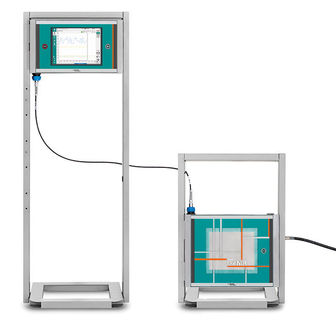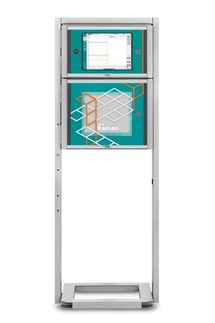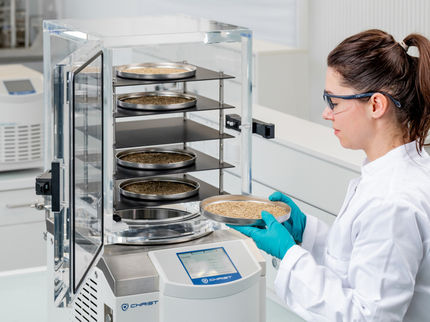To use all functions of this page, please activate cookies in your browser.
my.bionity.com
With an accout for my.bionity.com you can always see everything at a glance – and you can configure your own website and individual newsletter.
- My watch list
- My saved searches
- My saved topics
- My newsletter
AnticonvulsantThe anticonvulsants, sometimes also called antiepileptics, belong to a diverse group of pharmaceuticals used in prevention of the occurrence of epileptic seizures. More and more, anticonvulsants are also finding ways into the treatment of bipolar disorder, since many seem to act as mood stabilizers. The goal of an anticonvulsant is to suppress the rapid and excessive firing of neurons that start a seizure. Failing this, a good anticonvulsant would prevent the spread of the seizure within the brain and offer protection against possible excitotoxic effects that may result in brain damage. However, anticonvulsants themselves have been linked to lowered IQ[1] and cell apoptosis.[2] Many anticonvulsants block Sodium (Na+) channels, Calcium (Ca2+) channels, AMPA receptors or NMDA receptors. Some anticonvulsants inhibit the metabolism of GABA or increase its release. Some anticonvulsants have shown antiepileptogenic effects in animal models of epilepsy. That is, they either prevent the expected development of epilepsy or can halt or reverse the progression of epilepsy. However, no drug has shown this effect in human trials.[3] Product highlightApprovalThe usual method of achieving approval for a drug is to show it is effective when compared against placebo, or that it is more effective than an existing drug. In monotherapy (where only one drug is taken) it is not ethical to conduct a trial with placebo on a new drug of uncertain efficacy. This is because untreated epilepsy leaves the patient at significant risk of death. Therefore, almost all new epilepsy drugs are initially approved only as adjunctive (add-on) therapies. Patients who's epilepsy is currently uncontrolled by their medication (i.e., it is refractory to treatment) are selected to see if supplementing the medication with the new drug leads to an improvement in seizure control. Any reduction in the frequency of seizures is compared against a placebo.[3] Once there is confidence that a drug is likely to be effective in monotherapy, trials are conducted where the drug is compared to an existing standard. For partial-onset seizures, this is typically carbamazepine. Despite the launch of over ten drugs since 1990, no new drug has been shown to be more effective than the older set, which includes carbamazepine, valproate and phenytoin. The lack of superiority over existing treatment, combined with the lack of placebo-controlled trials, means that few modern drugs have earned FDA approval as initial monotherapy. In contrast, Europe only requires equivalence to existing treatments, and has approved many more. Despite their lack of FDA approval, the American Academy of Neurology and the American Epilepsy Society still recommend a number of these new drugs as initial monotherapy.[3] DrugsIn the following list, the dates in parentheses are the earliest approved use of the drug. AldehydesMain article: Aldehydes
Aromatic allylic alcohols
BarbituratesMain article: Barbiturates Barbiturates are drugs that act as central nervous system (CNS) depressants, and by virtue of this they produce a wide spectrum of effects, from mild sedation to anesthesia. The following are classified as anticonvulsants:
Phenobarbital was the main anticonvulsant from 1912 till the development of phenytoin in 1938. Today, phenobarbital is rarely used to treat epilepsy in new patients since there are other effective drugs that are less sedating. Phenobarbital sodium injection can be used to stop acute convulsions or status epilepticus, but a benzodiazepine such as lorazepam, diazepam or midazolam is usually tried first. Other barbiturates only have an anticonvulsant effect at anaesthetic doses. BenzodiazepinesMain article: Benzodiazepines The benzodiazepines are a class of drugs with hypnotic, anxiolytic, anticonvulsive, amnestic and muscle relaxant properties. The relative strength of each of these properties in any given benzodiazepine varies greatly and influences the indications for which it is prescribed. Long-term use can be problematic due to the development of tolerance and dependency. Of the many drugs in this class, only a few are used to treat epilepsy:
The following benzodiazepines are used to treat status epilepticus:
BromidesMain article: Bromides
CarbamatesMain article: Carbamates
CarboxamidesMain article: Carboxamides The following are carboxamides:
Fatty acidsMain article: Fatty acids The following are fatty-acids:
Vigabatrin and progabide are also analogs of GABA. Fructose derivativesMain article: Fructose
Gaba analogs
HydantoinsMain article: Hydantoins The following are hydantoins:
OxazolidinedionesMain article: Oxazolidinediones The following are oxazolidinediones:
PropionatesMain article: Propionates
PyrimidinedionesMain article: Pyrimidinediones
PyrrolidinesMain article: Pyrrolidines
SuccinimidesMain article: Succinimides The following are succinimides:
SulfonamidesMain article: Sulfonamides
TriazinesMain article: Triazines
UreasMain article: Ureas
Valproylamides (amide derivatives of valproate)Main article: Amides DietThe Ketongenic Diet Program is a strict medically supervised diet that has an anticonvulsant effect. It is typically used in children with refractory epilepsy. DevicesThe vagus nerve stimulator (VNS) is a device that sends electric impulses to the left vagus nerve in the neck via a lead implanted under the skin. It was FDA approved in 1997 as an adjunctive therapy for partial-onset epilepsy. Marketing approval historyThe following table lists anticonvulsant drugs together with the date their marketing was approved in the US, UK and France. Data for the UK and France is incomplete. In recent years, the European Medicines Agency has approved drugs throughout the European Union. Some of the drugs are no longer marketed.
See alsoReferences
Categories: Anticonvulsants | Epilepsy |
||||||||||||||||||||||||||||||||||||||||||||||||||||||||||||||||||||||||||||||||||||||||||||||||||||||||||||||||||||||||||||||||||||||||||||||||||||||||||||||||||||||||||||||||||||
| This article is licensed under the GNU Free Documentation License. It uses material from the Wikipedia article "Anticonvulsant". A list of authors is available in Wikipedia. | ||||||||||||||||||||||||||||||||||||||||||||||||||||||||||||||||||||||||||||||||||||||||||||||||||||||||||||||||||||||||||||||||||||||||||||||||||||||||||||||||||||||||||||||||||||







